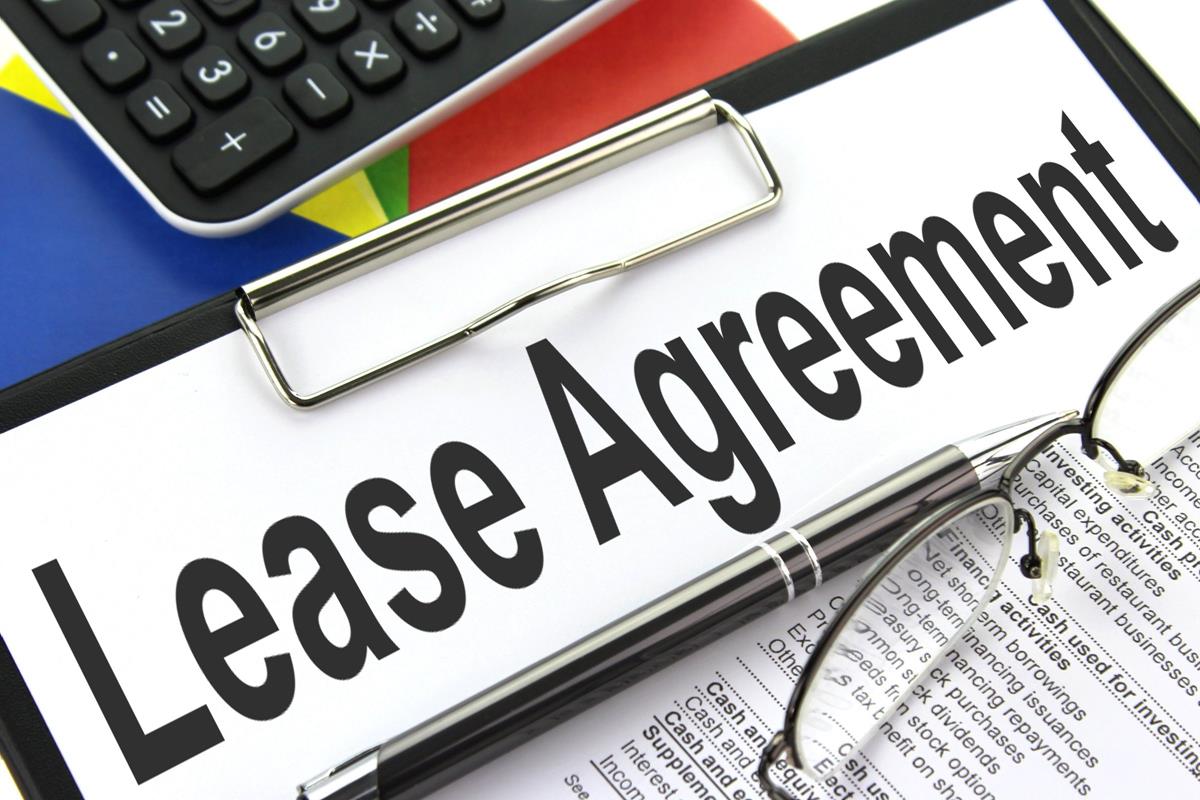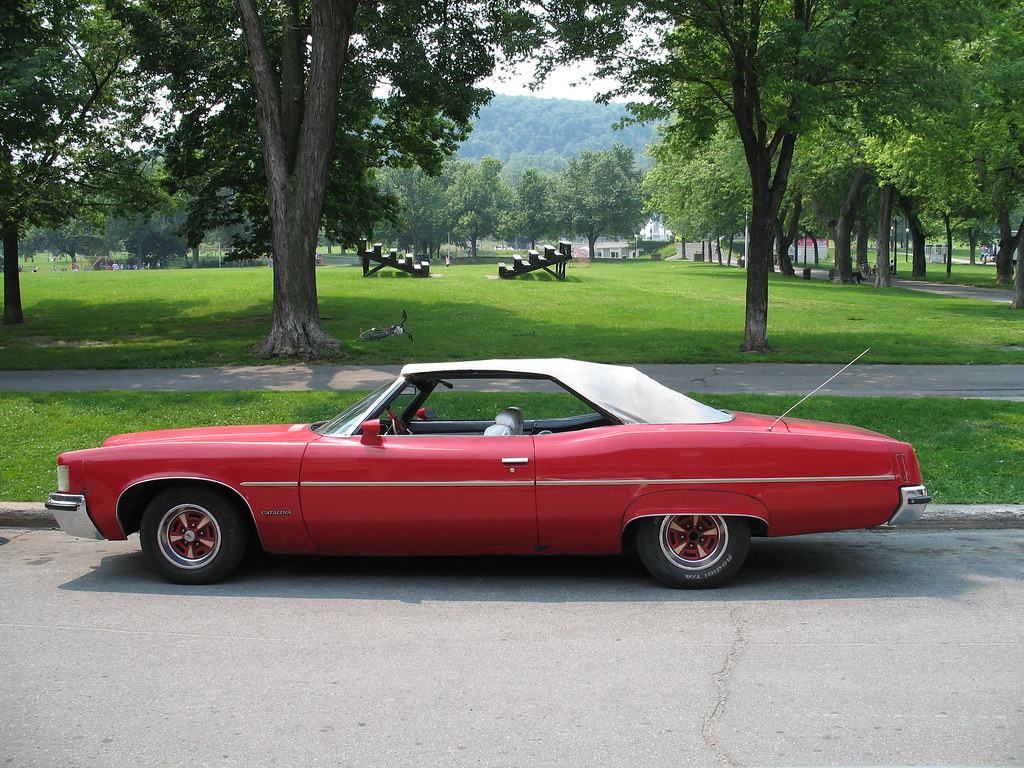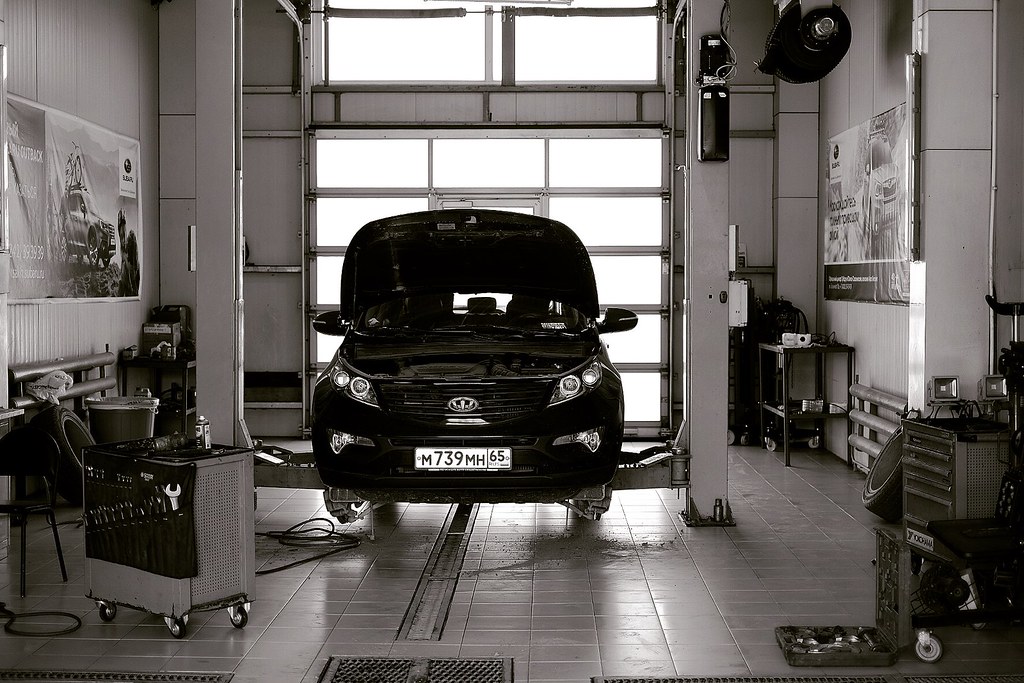
Navigating the complexities of a new car lease agreement can often feel like traversing a labyrinth of jargon and hidden costs. Dealerships frequently present leasing as a simple path to lower monthly payments, which is often true compared to purchasing. However, a truly advantageous lease deal goes far beyond just a seemingly attractive monthly figure.
For consumers, understanding the intricacies of a lease—and critically, what can and cannot be negotiated—is paramount. Without this foundational knowledge, you risk being swayed by sales tactics that inflate profits at your expense. Equipping yourself with actionable insights transforms you from a passive recipient of an offer into an empowered negotiator, capable of securing terms that genuinely align with your financial goals and driving needs.
This comprehensive guide will arm you with 13 simple yet powerful secrets to help you deconstruct lease agreements, identify areas for significant savings, and confidently negotiate your way to the lowest possible price. By applying these strategies, you can significantly reduce the final cost of leasing by $1,000 or more, making leasing a truly economical option. Let’s delve into the first six critical steps to becoming a lease negotiation pro.

1. **Understand Lease Basics and Terminology**
Before you even step foot into a dealership, a solid grasp of fundamental leasing terminology is your most powerful tool. Leasing is fundamentally different from buying, and its structure is based on how much the car is expected to depreciate during the lease term, typically two or three years. This depreciation, along with fees and interest, is broken into your monthly payments.
The three terms you absolutely need to know are Residual Value, Capitalized Cost, and Money Factor. The Residual Value is the expected value of the car at the end of the lease, determined by the leasing company using third-party analysis. This figure is generally non-negotiable and heavily influences your monthly payments, as you’re essentially paying for the difference between the car’s initial price and this predicted end-of-lease value.
Capitalized Cost, or cap cost, is simply the price of the car. This is the starting point for your lease calculations and, crucially, is highly negotiable, just like the purchase price of a vehicle. The Money Factor acts like an interest rate for leases; it’s a small decimal that can be converted to a more familiar annual interest rate by multiplying it by 2,400. Understanding how these three components interact is the bedrock of intelligent lease negotiation.
Read more about: Buyer’s Remorse in Every Sip: 15 Craft Beer Tasting Pitfalls Connoisseurs Wish They Could Undo

2. **Ensure Leasing is Right for You**
While lower monthly payments can be tempting, leasing isn’t for everyone. It’s essential to confirm that leasing aligns with your specific needs and driving habits before committing. There are plenty of legitimate reasons to lease, such as wanting to ensure your car is always under warranty, or if you prefer to drive a new car every few years without the long-term commitment of ownership. However, a salesperson might try to talk you into leasing by highlighting lower monthly payments for a nicer car, omitting the fact that at the end of the term, you’ll have no car, instead of a paid-off one.
Leasing means you are essentially renting the vehicle, not paying to own it. Unless you exercise a buyout option at the end of the term, you won’t recoup any money you’ve put in. Therefore, it’s wise to keep the cost of your lease as low as possible. Carefully consider your own reasons for leasing, rather than being swayed solely by a dealer’s pitch, to ensure this financial decision genuinely serves your best interests.
Comparing the average cost of a car lease to a loan can be illuminating. The average lease payment for a new vehicle is $467 per month, which is approximately $100 cheaper per month than the average new car loan payment of $568. This difference highlights the immediate financial advantage of leasing. However, this advantage only holds if the lease terms are favorable and tailored to your usage.
Read more about: Steering Clear: 15 Simple, App-Free Strategies to Master Distracted Driving Prevention

3. **Prioritize Vehicles with High Residual Values**
One of the most impactful factors in securing a low lease payment is the vehicle’s residual value. Since your monthly payments are primarily based on the car’s depreciation over the lease term, choosing a vehicle that holds its value well can significantly reduce your costs. Not all cars depreciate at the same rate, making this a critical consideration in your initial car selection.
Vehicles with high residual values depreciate less over their first few years, meaning the difference between the capitalized cost and the residual value is smaller. This directly translates to lower lease payments because you’re paying for less depreciation. Organizations like ALG award top-performing vehicles based on their residual value predictions each year, and researching these models can guide you towards more economical leasing options.
Beyond the financial aspect, selecting a car with a strong residual value also often indicates a vehicle that is in demand and well-regarded in the market. While the ultimate goal is a great deal, remember the U.S. News Best Cars rule: “You aren’t getting a great deal unless you’re getting a good car that meets your needs and budget.” Combine high residual value with a vehicle that truly suits you, and you’re off to an excellent start.
Read more about: Are You Driving a ‘Clown’ Car? The 5 Minivans That Crash in Resale Value

4. **Know What’s Negotiable (and What Isn’t)**
Effective negotiation hinges on knowing your battlegrounds. While many elements of a new vehicle lease are open for discussion, some are typically fixed. Don’t waste your time trying to haggle over terms that dealers genuinely can’t change, as this only detracts from areas where you can achieve real savings. The car’s residual value, for instance, is generally set by the leasing company or automaker’s finance arm based on independent assessments, and dealers usually do not budge on this number. If a salesperson claims they are, they are likely just shifting other figures to create the illusion of flexibility.
Similarly, certain mandatory fees, such as registration, taxes, and destination charges (the cost to transport the vehicle to the dealership), are merely passed through the dealer and cannot be negotiated away. Disposition fees and purchase option fees are also often hard-wired into the lease contract. However, many other elements are absolutely on the table. The biggest and most impactful negotiable item is the capitalized cost, or the price of the vehicle, which you should be prepared to negotiate just as if you were buying the car outright.
Beyond the cap cost, unless you’re taking advantage of a manufacturer’s special lease deal with preset terms, the money factor (interest rate) is often negotiable. Knowing your credit score and the rates you should qualify for empowers you to challenge an unfavorable money factor. Other fees, such as documentation fees or advertising fees, can sometimes be haggled down or even eliminated, especially if they appear to be junk fees designed to pad the dealer’s bottom line. Understanding these distinctions is crucial for directing your negotiation efforts effectively.

5. **Always Negotiate the Capitalized Cost First**
Just as when you buy a car, the most direct path to an affordable lease begins with securing the best possible price for the vehicle. This is known as the capitalized cost, and despite what some dealers might suggest, it is absolutely negotiable. The salesperson’s primary objective will often be to keep your focus on the monthly payment, as this allows them more room to manipulate other figures while still presenting a seemingly attractive offer.
Your strategy should be to approach the lease as if you were buying the vehicle outright, and relentlessly focus on driving down that capitalized cost. Be prepared to negotiate the sale price below the Manufacturer’s Suggested Retail Price (MSRP). Look for any available incentives or rebates that can further reduce this cost, such as loyalty incentives, conquest cash for switching brands, or college graduate discounts. These can significantly lower your starting point for the lease calculation.
If you have a trade-in vehicle, it’s critical to negotiate its value entirely separately from the new car’s price. Dealers often try to bundle these figures, which can obscure an inflated markup on the new vehicle or a lowball offer for your trade-in. Use independent services like CarMax or Carvana to get external quotes for your trade-in, establishing its real market value and providing you with leverage. By separating these negotiations, you ensure transparency and optimize savings on both ends of the transaction.

6. **Master the Money Factor**
The money factor is the lease’s equivalent of an interest rate, and understanding how to negotiate it is a significant secret to reducing your total lease cost. Dealers may mark up the money factor for additional profit, so it’s vital to know what a fair rate is for your credit profile. You can convert the money factor to an easier-to-understand annual percentage rate (APR) by multiplying it by 2,400. For example, a money factor of 0.0020 translates to a 4.8% APR (0.0020 x 2,400 = 4.8).
By knowing your credit score and researching typical money factors for your credit tier, you can assess whether the offer you receive is competitive. Don’t hesitate to ask the dealer if the money factor they are presenting is a “purchase price” (the base rate from the leasing company) or if it includes a premium rate (a markup). Requesting a small reduction, perhaps from 0.0020 to 0.0015, can save you hundreds of dollars over the life of the lease, as shown in real-world examples.
If you’re presented with a manufacturer’s special lease deal, the money factor may be preset and non-negotiable. However, for standard leases, this is a prime area for negotiation. Use your credit profile as leverage to push for a better lease rate. Having offers from multiple dealerships, which you’ve gathered through preliminary research, can also serve as powerful ammunition to negotiate a lower money factor, as dealers will be more incentivized to match or beat competitors’ rates.
Navigating a car lease agreement successfully requires more than just mastering the basics; it demands a strategic approach to negotiation and a keen eye for detail. Building on the foundational knowledge of understanding lease terms, assessing suitability, prioritizing high residual values, and negotiating the capitalized cost and money factor, we now delve into advanced tactics. These next seven secrets will equip you with powerful strategies to uncover even more savings, from comprehensively assessing total costs to meticulously reviewing final documents, ensuring you secure the absolute best deal. Let’s continue your journey to becoming a lease negotiation pro.
Read more about: Unlocking the Wisdom of Warren Buffett: The Enduring Investment Philosophy That Shaped Business Leaders

7. **Go Beyond the Monthly Payment: Focus on Total Cost**
A common pitfall in lease negotiations is allowing the salesperson to steer the conversation exclusively toward the monthly payment. While a lower monthly figure is appealing, it can often mask other inflated costs within the lease agreement, leading you to dramatically overpay for the car over the life of the contract. The real measure of a good deal isn’t just the low monthly number but the total financial outlay from start to finish.
To truly assess a lease offer, you must calculate its total cost. This involves a straightforward process: multiply the monthly payment by one less than the number of months in the lease term (since the first payment is typically due upfront). Then, add the total amount you are required to pay at signing, which includes any down payments, taxes, and various fees. Dividing this sum by the total number of months gives you a clearer picture of the actual average monthly expense and allows for a comprehensive comparison between different offers.
An experienced salesperson might manipulate variables like the down payment or the trade-in value to present an attractively low monthly figure, while still maximizing the dealer’s profit. By focusing on the total cost, you strip away these deceptive tactics and gain transparency. This method empowers you to compare multiple offers side-by-side, whether they are from different dealerships or even offers for buying versus leasing, ensuring you select the most economical option.
For a quick initial gauge, consider applying the “1% Rule.” This informal guideline suggests that if your pre-tax monthly payment is approximately 1% of the Manufacturer’s Suggested Retail Price (MSRP), the deal is generally considered competitive. For instance, a $350 monthly payment on a $35,000 vehicle signals a potentially good deal, offering a swift filter before you delve into the deeper financial analysis of total cost.
Read more about: Decoding the $300 Rule: Practical Steps to Finance Your Car Without Financial Strain
8. **Accurately Gauge Your Mileage Needs**
Entering a lease agreement without a precise understanding of your annual driving habits can prove to be an extraordinarily expensive oversight. Lease contracts specify an annual mileage cap, often 10,000 or 12,000 miles, and exceeding this limit results in hefty per-mile penalties at the end of the term. These excess mileage charges can quickly accumulate, turning an otherwise favorable lease into a financial burden.
Conversely, overestimating your mileage can also lead to unnecessary costs. If you opt for a higher mileage allowance than you truly need, you’ll be paying for anticipated depreciation that simply won’t occur. This means you’re effectively subsidizing the leasing company for a risk that doesn’t materialize. The goal is to align the lease’s mileage cap as closely as possible with your actual driving patterns to optimize costs.
Before you begin negotiations, take the time to accurately assess how many miles you typically drive each year. Once you have this critical figure, you can confidently negotiate a mileage cap that reflects your reality. While mileage caps on special manufacturer-advertised lease deals are generally non-negotiable, standard leases often allow for flexibility. Don’t hesitate to request quotes for different mileage allowances, such as 12,000 or 15,000 miles annually, if the standard 10,000 isn’t sufficient.
Consider the option of prepaying for extra miles at a discount, which can be significantly more cost-effective than facing overage fees at lease-end. For example, prepaying for an additional 3,000 miles might cost between $300 to $600 upfront, whereas paying an overage fee of $0.25 per mile for those same 3,000 miles would amount to $750. Clarifying these details and confirming any credits or refunds for unused miles upfront can save you from unwelcome surprises later.
Read more about: Navigating the Tire Market: 15 Essential Tips to Secure the Best Price and Maximize Value for Your Next Set of Tires

9. **Shop Around Extensively for the Best Offers**
In the quest for the lowest possible lease price, one of the most effective strategies is to cast a wide net and shop around extensively. Limiting yourself to a single dealership significantly reduces your leverage and negotiation power, as you eliminate the competitive pressure that can drive prices down. A dealer has far less incentive to offer their best deal if they know you haven’t explored other options.
Leveraging the power of the internet makes this process easier than ever. You can contact multiple dealerships online, requesting full lease breakdowns via email, including the sale price, lease term, money factor, residual value, monthly payment breakdown, amount due at signing, and any available incentives. This not only allows you to gather a range of offers from the comfort of your home but also creates a written record of all communications, reducing pressure and providing tangible evidence for comparison.
Once you’ve collected several competitive offers, use the strongest ones as leverage. Present a compelling offer from one dealership to another, indicating your willingness to take your business elsewhere if they can’t match or beat it. This strategy forces dealerships to compete for your business, encouraging them to sharpen their pencils and provide more favorable terms. The U.S. News Best Price Program, for instance, offers a convenient way to connect with local dealers providing pre-negotiated, money-saving prices.
Remember, a test drive at a local dealer doesn’t obligate you to lease from them. Use these visits to experience the vehicle and then take your findings back to the negotiating table, armed with a deeper understanding of the car and a broader perspective on market pricing. The goal is to empower yourself with information from multiple sources to ensure you’re not leaving any money on the table.
Read more about: 15 Unbeatable Secrets Top Real Estate Agents Swear By to Sell Homes Faster and for More

10. **Leverage Manufacturer Lease Deals and Incentives**
Automakers frequently roll out special lease deals and incentives to stimulate sales and clear inventory, and savvy consumers can take significant advantage of these promotions. These manufacturer-advertised offers often come with attractively low monthly payments, minimal amounts due at signing, or sometimes both. By actively seeking out and comparing these deals, you can uncover opportunities for substantial savings that might not be available through standard lease negotiations.
Brands with strong captive finance arms, such as Ford, Honda, Toyota, Kia, Hyundai, and Buick, are particularly known for offering competitive lease deals. You might encounter specific incentives like “conquest cash” designed to attract customers from competing brands, or “one-pay leases” where a single upfront payment can dramatically lower the money factor. While these special offers may have preset, non-negotiable terms for elements like the money factor, their overall value can still lead to thousands of dollars in savings.
However, it’s crucial not to assume that every advertised lease deal is automatically a “great deal.” Even with manufacturer specials, you must still apply the same diligence: calculate the total cost of the lease and compare it rigorously to other offers. Utilize resources like dedicated lease deals pages to access current promotions and scrutinize the terms carefully. Look beyond the appealing monthly payment to understand the complete financial picture.
Sometimes, these deals are tied to specific models that automakers are keen to move, perhaps because they are nearing the end of their production cycle or a refresh is imminent. While this might mean compromising slightly on your ideal vehicle specifications or color, the potential for aggressive pricing and promotional financing, often with low APRs or cashback, can make these opportunities incredibly rewarding for a budget-conscious lessee with excellent credit.
Read more about: Debunking the Car-Buying Myths: Your Guide to the 10 Best Times to Score a Deal

11. **Strategically Avoid Costly Add-Ons and Unnecessary Fees**
A carefully negotiated lease can quickly become an expensive burden if you fall prey to the pressure of purchasing costly and often questionable add-ons at the dealership. Salespeople are trained to present these extras—ranging from extended warranties and paint protection to fabric sealants and VIN etching—as essential, sometimes even implying they are mandatory. It’s vital to remember that most of these products are optional and are significant profit centers for the dealership.
Before succumbing to any pressure, take a moment to research each additional purchase thoroughly. Question the necessity of the product itself and the company offering it. Many seemingly convenient extras, such as extended warranties and GAP insurance, are often available from third-party providers or your own insurance company at a significantly lower cost. For example, while GAP insurance is typically required by leasing companies, bundling it with your auto policy is usually far more economical than purchasing a separate policy from the dealership, which can cost around $700.
Furthermore, pay close attention to the various fees listed in your lease agreement. While certain mandatory fees like registration, taxes, and destination charges are non-negotiable pass-through costs, others are not. Acquisition fees, disposition fees, and particularly “documentation” or “doc” fees can sometimes be negotiated down or even eliminated. Aggressively challenge any advertising fees or other vague line items that appear to be nothing more than “junk fees” designed to inflate the dealer’s bottom line.
A deceptive tactic employed by some unscrupulous dealers involves charging a destination or freight charge a second time, despite it already being included in the vehicle’s price sticker. Always scrutinize the final paperwork for such duplicate charges and demand their removal. By carefully reviewing and questioning every fee and add-on, you safeguard your negotiated savings and prevent a great deal from unraveling into an expensive lesson.
Read more about: Drive Smarter: 12 Game-Changing Negotiating Phrases to Save Thousands on Your Next Truck Purchase

12. **Time Your Deal Strategically for Maximum Savings**
The timing of your lease negotiation can play a surprisingly significant role in securing a more favorable deal. Dealerships operate under sales quotas set by manufacturers, often tied to monthly, quarterly, or even annual targets. If you visit a dealership when they are behind on their sales goals and eager to move inventory, you are likely to encounter a more motivated salesperson and a greater willingness to negotiate on price and terms.
The end of the month or quarter is a particularly opportune time to lease a car. As these deadlines approach, dealerships and their sales teams often become more flexible, offering steeper discounts or special incentives to meet their targets and earn bonuses. Similarly, the end of the model year, or when a specific model is being refreshed or redesigned, can present excellent opportunities as dealers look to clear out older inventory to make way for new arrivals.
Another period that can yield better deals is during “lease return season,” typically spanning from March to May. During this time, a higher volume of off-lease vehicles enters the market, and dealerships may be more aggressive in offering new lease incentives to replace their returning inventory and encourage repeat business. Keeping an eye on these cycles and aligning your visit accordingly can significantly enhance your negotiating position.
Be wary of high-pressure sales tactics that create a false sense of urgency, such as claims that an offer is “only valid today.” This is a classic ploy designed to rush you into a decision before you’ve had a chance to thoroughly review the terms or compare offers. If you’re not getting the deal you want, be prepared to walk away. Leaving your phone number and indicating your willingness to return if they can offer more flexibility often prompts them to sweeten the deal, especially if they are close to meeting a quota.
Read more about: Navigating the Tire Market: 15 Essential Tips to Secure the Best Price and Maximize Value for Your Next Set of Tires

13. **Double-Check All Documents Before Signing**
After successfully navigating the negotiation process and securing what you believe is an excellent lease deal, there’s one final, absolutely critical step that cannot be overlooked: meticulously reviewing every single document before you sign. The excitement of driving away in a new car can make this step feel like an unnecessary delay, but overlooking it could cost you dearly if the final paperwork doesn’t accurately reflect the terms you agreed upon.
Sales contracts, especially lease agreements, are often complex and filled with legal jargon. It’s not uncommon for errors—whether intentional or accidental—to appear in the final documents. These discrepancies could include an incorrect capitalized cost, an altered money factor, a different mileage allowance, or the addition of fees or add-ons you explicitly declined. Always insist on receiving a full lease breakdown in writing during negotiations to have a clear reference point.
Take your time to read through the entire contract, line by line. Verify that the sale price, money factor, residual value, lease term, mileage limits, and all payments (monthly and due at signing) precisely match your negotiated terms. Scrutinize all fees, ensuring there are no unexpected charges or duplicate destination fees. Confirm that any incentives or rebates discussed are clearly applied and reflected in the final figures.
Furthermore, ensure that the quote you received is based on a lease already approved by the leasing company, not just a rough estimate. Dealers sometimes provide estimates that “change” later, claiming unforeseen circumstances. By thoroughly checking and questioning anything that looks amiss, you safeguard your hard-earned savings and ensure the deal you’re signing is indeed the deal you negotiated. Never sign anything you don’t fully understand or agree with.
**Conclusion**
Negotiating a car lease doesn’t have to be an intimidating ordeal. By arming yourself with knowledge, employing strategic negotiation tactics, and maintaining a vigilant eye on every detail, you can transform the leasing process from a daunting task into a rewarding experience. The ultimate goal is not just to secure a car, but to drive away with a smart financial decision that perfectly aligns with your budget and lifestyle.
Read more about: Don’t Get Trapped: The 13 Essential Questions to Ask Before Signing Any Contract
Remember, the power is in your hands. From understanding the core terminology and diligently researching your options to skillfully negotiating the capitalized cost and money factor, and meticulously reviewing your final documents, each step is an opportunity to save. Embrace the process, be prepared to walk away if necessary, and always prioritize the total cost of the lease over a seemingly low monthly payment. With these 13 simple secrets, you’re not just leasing a car; you’re mastering the art of the deal, ensuring every mile you drive is a testament to your shrewd financial acumen.




